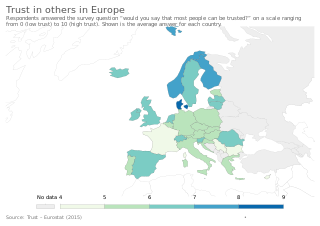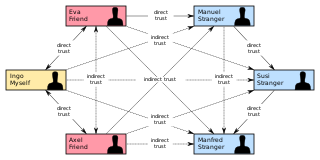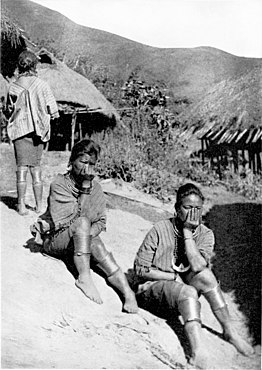The term Homo economicus, or economic man, is the portrayal of humans as agents who are consistently rational and narrowly self-interested, and who pursue their subjectively defined ends optimally. It is a wordplay on Homo sapiens, used in some economic theories and in pedagogy.

A public key infrastructure (PKI) is a set of roles, policies, hardware, software and procedures needed to create, manage, distribute, use, store and revoke digital certificates and manage public-key encryption. The purpose of a PKI is to facilitate the secure electronic transfer of information for a range of network activities such as e-commerce, internet banking and confidential email. It is required for activities where simple passwords are an inadequate authentication method and more rigorous proof is required to confirm the identity of the parties involved in the communication and to validate the information being transferred.
Organizational culture refers to culture related to organizations including schools, universities, not-for-profit groups, government agencies, and business entities. Alternative terms include corporate culture and company culture. The term corporate culture emerged in the late 1980s and early 1990s. It was used by managers, sociologists, and organizational theorists in the 1980s.

The following outline is provided as an overview of and topical guide to academic disciplines:
Neuroeconomics is an interdisciplinary field that seeks to explain human decision-making, the ability to process multiple alternatives and to follow through on a plan of action. It studies how economic behavior can shape our understanding of the brain, and how neuroscientific discoveries can guide models of economics.

Behavioral neuroscience, also known as biological psychology, biopsychology, or psychobiology, is the application of the principles of biology to the study of physiological, genetic, and developmental mechanisms of behavior in humans and other animals.
An organizational structure defines how activities such as task allocation, coordination, and supervision are directed toward the achievement of organizational aims.

Trust means believing that another person will do what is expected. It brings with it a willingness for one party to become vulnerable to another party, on the presumption that the trustee will act in ways that benefit the trustor. In addition, the trustor does not have control over the actions of the trustee. Scholars distinguish between generalized trust, which is the extension of trust to a relatively large circle of unfamiliar others, and particularized trust, which is contingent on a specific situation or a specific relationship.

In psychology and sociology, a trust metric is a measurement or metric of the degree to which one social actor trusts another social actor. Trust metrics may be abstracted in a manner that can be implemented on computers, making them of interest for the study and engineering of virtual communities, such as Friendster and LiveJournal.

A mental model in psychology is an internal representation of external reality, hypothesized to play a major role in cognition, reasoning and decision-making. The term was coined by Kenneth Craik in 1943 who suggested that the mind constructs "small-scale models" of reality that it uses to anticipate events.
A family business is a commercial organization in which decision-making is influenced by multiple generations of a family, related by blood or marriage or adoption, who has both the ability to influence the vision of the business and the willingness to use this ability to pursue distinctive goals. They are closely identified with the firm through leadership or ownership. Owner-manager entrepreneurial firms are not considered to be family businesses because they lack the multi-generational dimension and family influence that create the unique dynamics and relationships of family businesses.
The dictator game is a popular experimental instrument in social psychology and economics, a derivative of the ultimatum game. The term "game" is a misnomer because it captures a decision by a single player: to send money to another or not. Thus, the dictator has the most power and holds the preferred position in this “game.” Although the “dictator” has the most power and presents a take it or leave it offer, the game has mixed results based on different behavioral attributes. The results – where most "dictators" choose to send money – evidence the role of fairness and norms in economic behavior, and undermine the assumption of narrow self-interest when given the opportunity to maximise one's own profits.
Neuromarketing is a commercial marketing communication field that applies neuropsychology to market research, studying consumers' sensorimotor, cognitive, and affective responses to marketing stimuli. The potential benefits to marketers include more efficient and effective marketing campaigns and strategies, fewer product and campaign failures, and ultimately the manipulation of the real needs and wants of people to suit the needs and wants of marketing interests.
Intrapreneurship is the act of behaving like an entrepreneur while working within a large organization. Intrapreneurship is known as the practice of a corporate management style that integrates risk-taking and innovation approaches, as well as the reward and motivational techniques, that are more traditionally thought of as being the province of entrepreneurship. Corporate entrepreneurship is a more general term referring to entrepreneurial actions taking place within an existing organization whereas Intrapreneurship refers to individual activities and behaviors.

Paul J. Zak is an American neuroeconomist.
Entrepreneurship is the creation or extraction of economic value in ways that generally entail beyond the minimal amount of risk, and potentially involving values besides simply economic ones.
Trust management deals with how people or groups determine who or what to trust.
Swift trust is a form of trust occurring in temporary organizational structures, which can include quick starting groups or teams. It was first explored by Debra Meyerson and colleagues in 1996. In swift trust theory, a group or team assumes trust initially, and later verifies and adjusts trust beliefs accordingly.
Neuromanagement uses cognitive neuroscience, among other life science fields, and technology to analyze economic and managerial issues. It focuses on exploring human brain activities and mental processes when people are faced with typical problems of economics and management. This research provides insight into human decision-making and other general social behavior. The main research areas include decision neuroscience, neuroeconomics, neuromarketing, neuro-industrial engineering, and neuro-information systems. Neuromanagement was first proposed in 2006 by Professor Qingguo Ma, the director of Neuromanagement Laboratory of Zhejiang University.
Yaacov Schul is an Israeli professor of cognitive and social psychology at the Hebrew University of Jerusalem.









